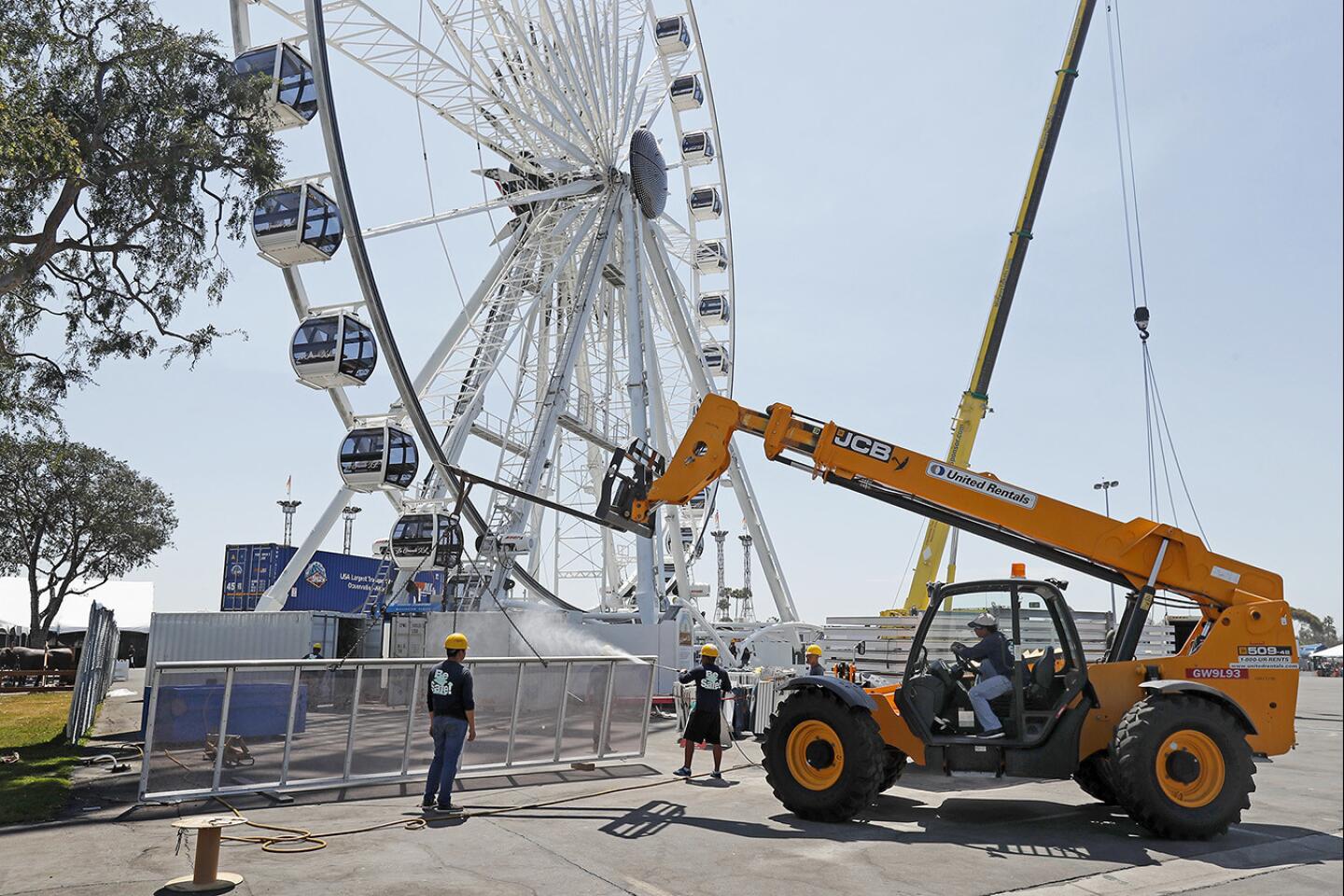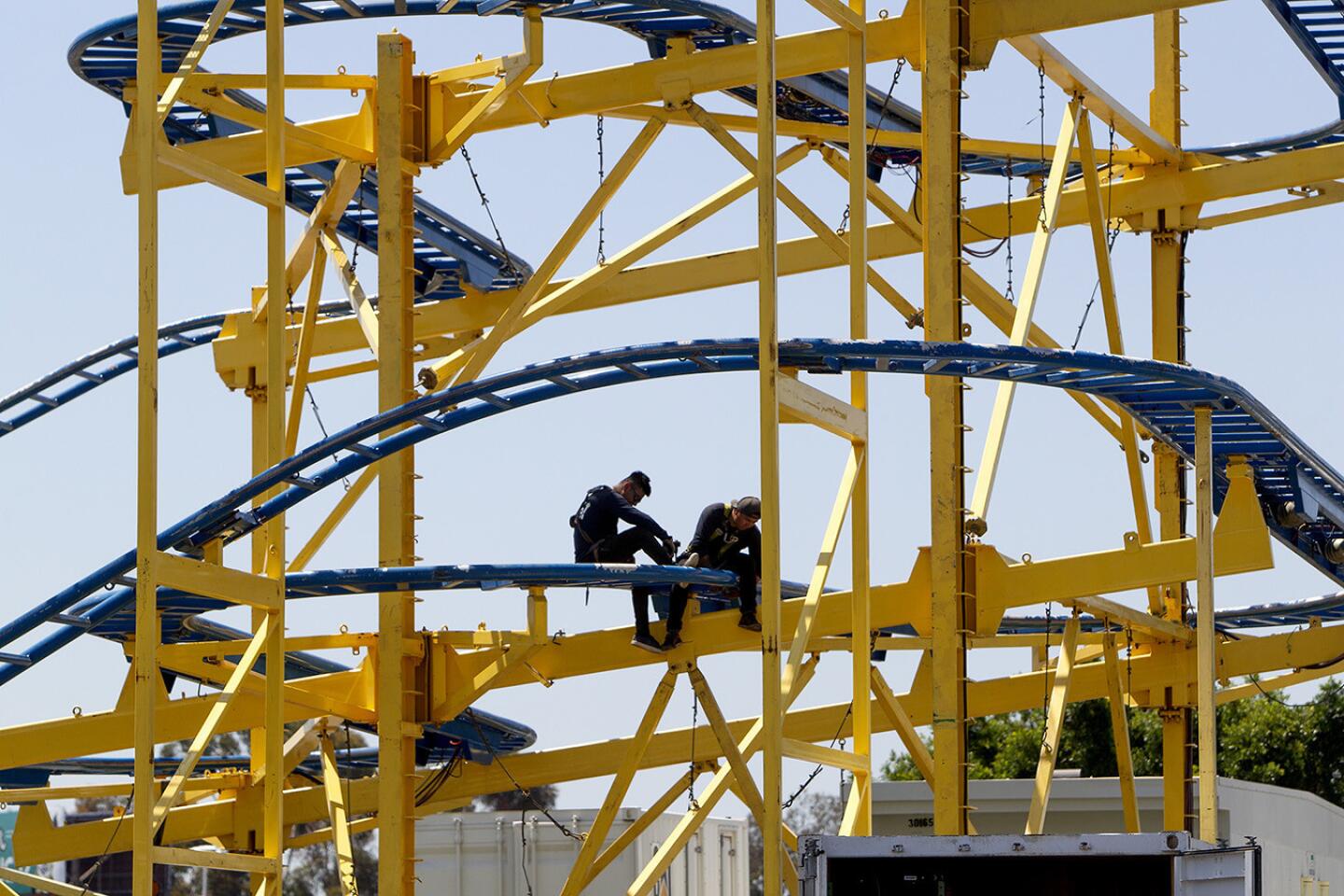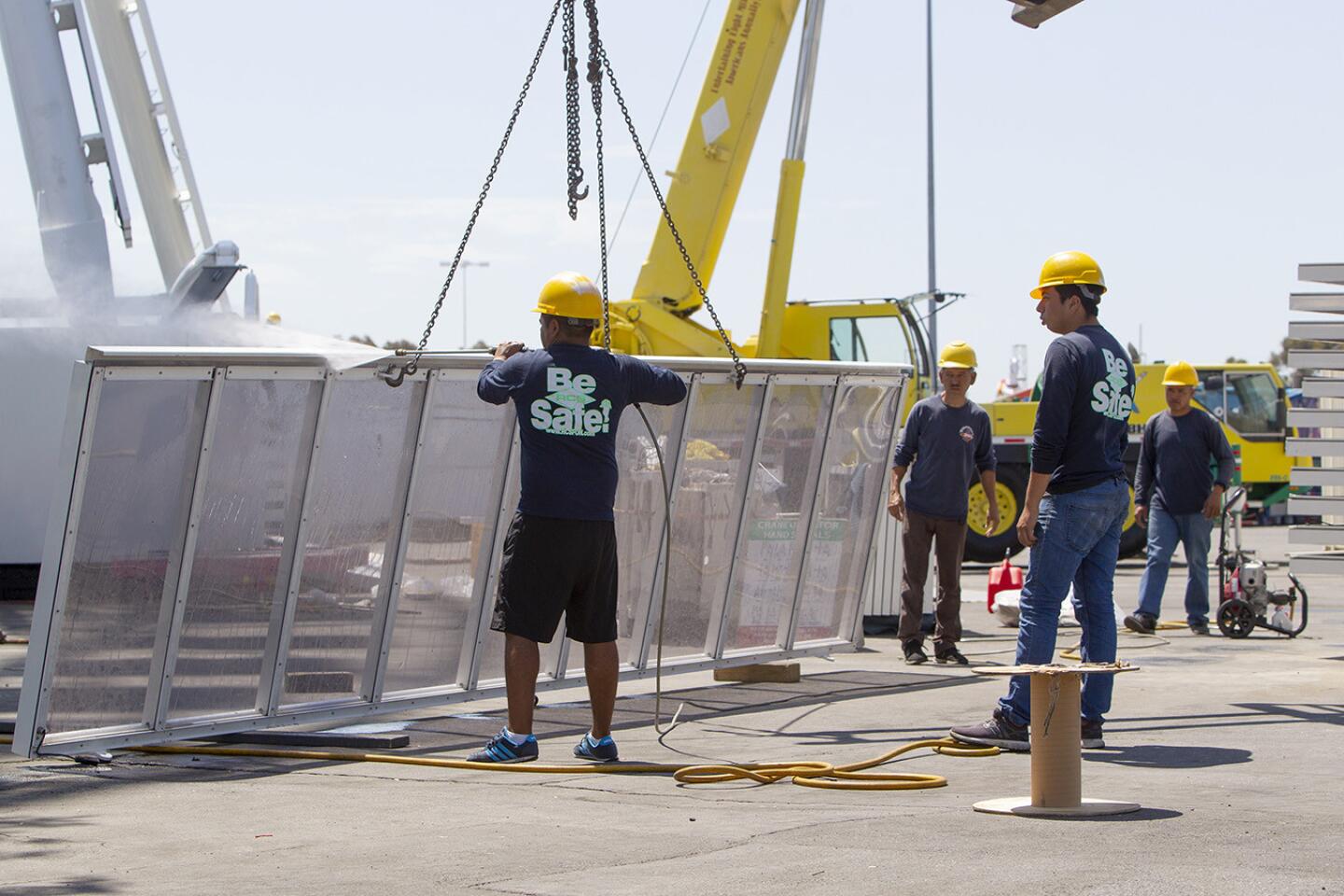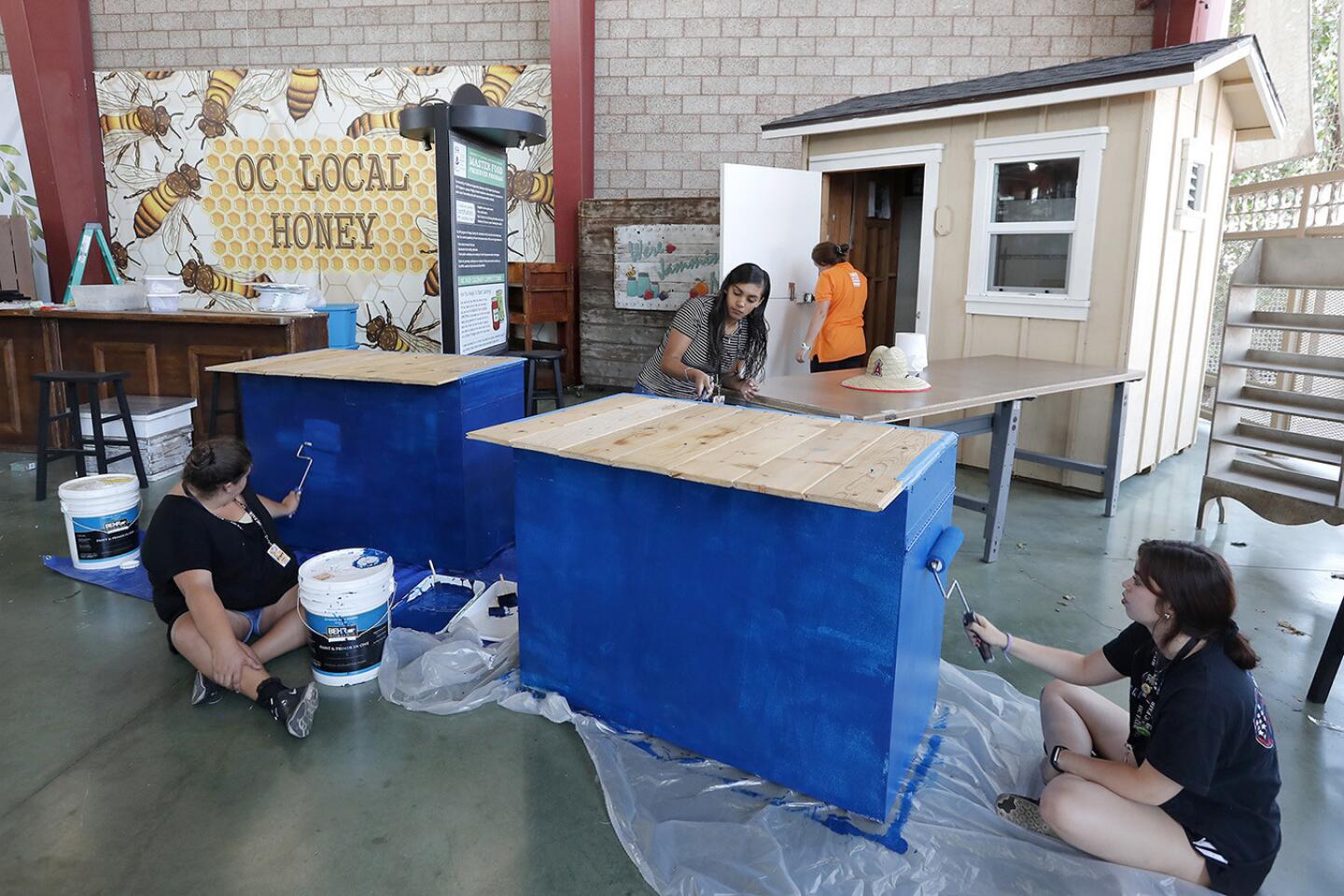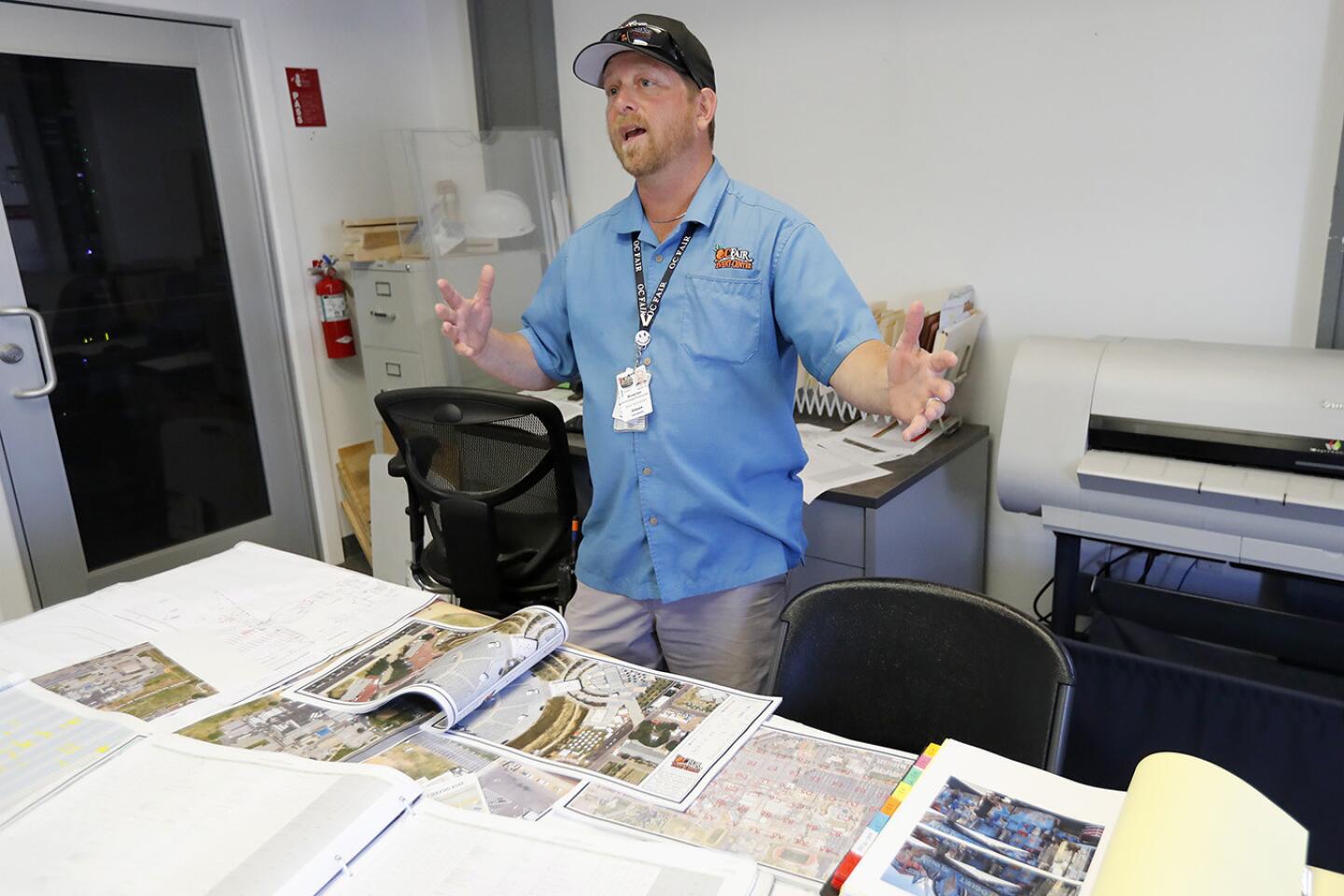Every inch matters when planning the Orange County Fair
Don’t let the vast expanse of its Costa Mesa property fool you: When it comes to planning the Orange County Fair, every single inch matters.
Think of it like throwing a house party. A good host needs to plan where visitors are going to park, how much food and drink to have on hand, what entertainment or games to offer and where to hang decorations so they look nice, but don’t get in the way.
Now, imagine that shindig lasts 23 days and has a guest list of more than 1 million, and you have an idea of the logistics involved with putting on the fair.
“I describe it as a giant jigsaw puzzle,” OC Fair & Event Center Chief Executive Kathy Kramer said during a tour of the preparations July 6, a week before the start of the 128th annual event. “Every single piece has to fit exactly and precisely.”
With opening day fast approaching, the fairgrounds was an anthill of activity — seemingly part construction site, part warehouse and part thrift store as a small army of workers fanned out in a coordinated dash to get the property ready for prime time.
Vendors busily unloaded supplies from trailers and pickup trucks while fairgrounds staffers ferried new plants around in wheelbarrows, and construction crews clambered onto winding metal tracks to put the finishing touches on a roller coaster.
Here and there, white dash marks crisscrossed portions of the pavement — sketching the borders of booths that had yet to arrive.
“With 150 acres,” Kramer said, referring to the size of the property, “we need to maximize every inch from a space capacity, but we also want to maximize it from a presentation and a customer experience perspective.”
While work to ready the fairgrounds has become steadily more apparent over the past week — a massive Ferris wheel has a way of making itself noticed, after all — the process of planning how best to configure the property for fair time never really ends.
One nerve center of those efforts is an office tucked away in the fairgrounds’ maintenance yard, where Jason Jacobsen, the Fair & Event Center’s director of planning and presentation, and his team put their heads together to plot the the most minute detail.
Tacked to an office wall is a sizable, intricate property schematic created with the assistance of computer-aided design software. A nearby table overflows with reams of drawings, photographs, aerial surveys and a more than 80-page master order list outlining everything needed to stage the fair, from tables and tents to fencing and generators.
Members of the Fair Logistics Committee, including Jacobsen, meet weekly throughout the year and use that mountain of material to diagram the event. Their mission is not just to make sure everything physically fits onto the property, but to take an holistic look at the operation: What issues popped up last year? Could the layout improve? Are there any new features that will demand additional space?
Jacobsen said he and the FLC team “take a lot of pride when we hear good feedback from concessionaires and the carnival and other partners who say, ‘Wow, things went really smoothly this year. It was better than last year, it was better than before.’ We know that’s a win for us.”
Squeezing everything in is trickier than one might think. Much of the Fair & Event Center is devoted to parking lots or taken up by existing facilities — leaving only about 57 acres for exhibits, vendors and the like.
“It’s really part science and part art in making it all fit in this compressed footprint,” Kramer said.
Maintaining continuity from year to year is also important. Fairgrounds officials said changes can sometimes earn them an earful from attendees who have become accustomed to certain stands being in specific places.
While the physical layout is one consideration, staff also has to incorporate the theme of the fair throughout the property. This year, that’s “Free Your Inner Farmer.”
Those thematic touches are the focus of the Fair & Event Center’s exhibits team, the members of which Kramer calls the “OC Fair elves.” In the lead-up to the fair, that crew is kept busy both making and searching for additional items to add to the fairgrounds’ decor — like a collection of cookbooks for a recipe-focused reading library, or a pair of custom-made overalls tailored to fit a supersized rooster statue.
“I love the random stuff. Look, there’s just a giant cheeseburger sitting around,” said Fair & Event Center spokeswoman Terry Moore, pointing to a decoration awaiting installation during last week’s tour.
Exhibits Supervisor Leslie Trasport said she and her team frequent Goodwill, flea markets and thrift stores to scrounge for any items that might make good additions to the fair — like an old cattle yoke or a salvaged vintage sink.
“We probably have 15 cargo trailers full of props,” she said with a smile. “I’m volleying to get my own offsite warehouse.”
With months of planning and preparation now in the rear-view mirror, fairgrounds officials said they’re looking forward to Friday, when attendees will first get to experience the fruits of all that labor.
“All of us can ‘Free Our Inner Farmer’ — and that’s really what we want fairgoers this year to understand: That every one of us has an opportunity to do that and get excited about it,” Kramer said.
If You Go
What: 2018 Orange County Fair
Where: OC Fair & Event Center, 88 Fair Drive, Costa Mesa
When: July 13 to Aug. 12; noon to midnight Wednesdays through Fridays, 11 a.m. to midnight Saturdays and Sundays.
Cost: General admission is $12 Wednesdays through Fridays and $14 on weekends. Single-day tickets cost $7 for children ages 6-12 and senior citizens 60 and older. Children 5 and younger can attend for free, as can active and retired military service members with valid ID. Onsite parking is $10 for cars and $20 for buses and limousines.
Specials and discounts: Several specials and discounts are available; details are at ocfair.com/oc-fair/discounts.
Information: ocfair.com
Twitter @LukeMMoney
All the latest on Orange County from Orange County.
Get our free TimesOC newsletter.
You may occasionally receive promotional content from the Daily Pilot.
